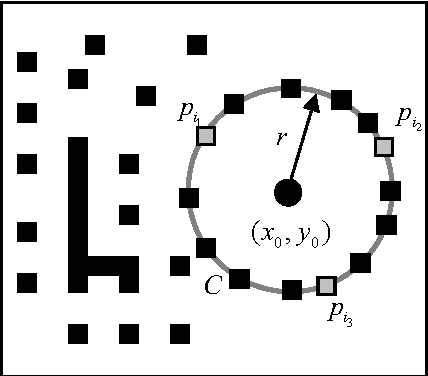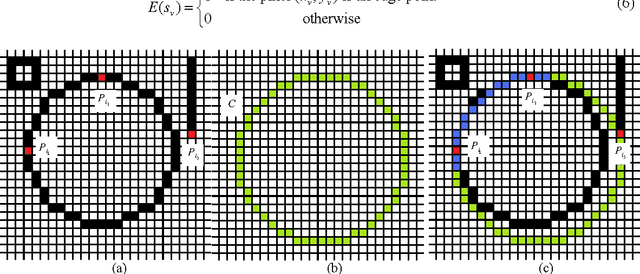Marco Perez Cisneros
Multi Circle Detection on Images Using Artificial Bee Colony (ABC) Optimization
Jun 25, 2014



Abstract:Hough transform (HT) has been the most common method for circle detection, exhibiting robustness, but adversely demanding considerable computational effort and large memory requirements. Alternative approaches include heuristic methods that employ iterative optimization procedures for detecting multiple circles. Since only one circle can be marked at each optimization cycle, multiple executions must be enforced in order to achieve multi detection. This paper presents an algorithm for automatic detection of multiple circular shapes that considers the overall process as a multi-modal optimization problem. The approach is based on the artificial bee colony (ABC) algorithm, a swarm optimization algorithm inspired by the intelligent foraging behavior of honey bees. Unlike the original ABC algorithm, the proposed approach presents the addition of a memory for discarded solutions. Such memory allows holding important information regarding other local optima which might have emerged during the optimization process. The detector uses a combination of three non-collinear edge points as parameters to determine circle candidates. A matching function (nectar- amount) determines if such circle candidates (bee-food-sources) are actually present in the image. Guided by the values of such matching functions, the set of encoded candidate circles are evolved through the ABC algorithm so that the best candidate (global optimum) can be fitted into an actual circle within the edge only image. Then, an analysis of the incorporated memory is executed in order to identify potential local optima, i.e., other circles.
* 19 Pages
 Add to Chrome
Add to Chrome Add to Firefox
Add to Firefox Add to Edge
Add to Edge